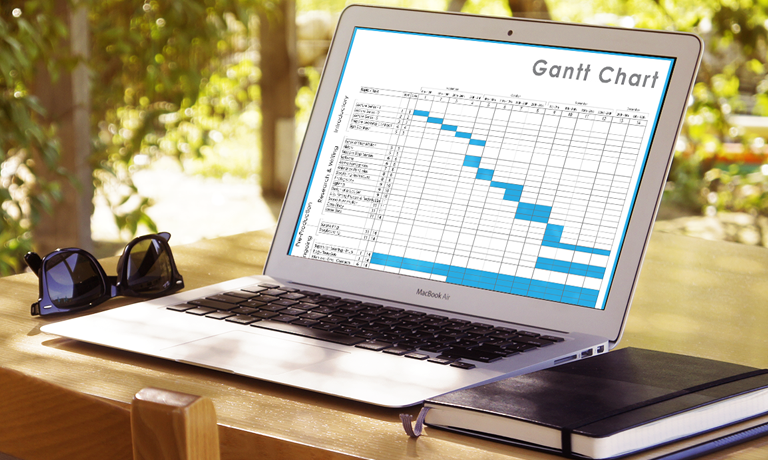Project Management Using Microsoft Project 2013
Instructors
Project Management Using Microsoft Project 2013
Objective
This two day course trains the student to use Microsoft Project 2013 in managing projects in compliance with the PMI PMBOK® Guide standards.
Day 1 of the course introduces the operations required to create a Microsoft Project plan file, determine scope and enter a work breakdown structure, identify project tasks and estimate their durations, assign and level resources, determine costs, and achieve an optimum schedule.
Day 2 of the course introduces more advanced topics in MS Project, including importing and exporting data from or to other MS applications, tracking progress during the project, managing project costs during execution, and reporting project information in graphic formats. Additional topics include setting up templates to permit re-use of a good project plan, the use of customized views and tables, sharing resources between projects, and creating a master project to view multiple projects as a whole.
The course includes 53 hands-on exercises to reinforce learning exactly how to do each step.
Who Should Attend
The course is suited to those professionals with some experience in managing projects who will be using Microsoft Project 2013 in their project management duties.
Course Outline
Day One – Basic Topics
- Course Introduction, review of content, basic schedule.
- Getting Started with Microsoft Project
- MS Project Environment, basic usage
- Using different views of the project file
- Creating a Project Plan (The PMI Planning Approach)
- Creating a new project file
- Creating a project calendar
- Define scope. Deliverable based WBS. Break down the deliverables of the project.
- Define the activities to create each deliverable.
- Estimate the duration of each activity. Estimation techniques: Parametric, Analogous, Delphi technique, Brainstorming, PERT estimates.
- Discuss duration, work, units and their differences in MSP.
- Enter the activities into MSP with estimated duration.
- Add the resources you will use to your project plan.
- Managing Tasks in a Project Plan
- Structuring the tasks in your plan. Recurring tasks like meetings
- Sequence plan activities based on relationships. Relationships become the basis of building the schedule. Discuss types of relationships, lag and lead time.
- Constraining tasks. Why do it? Why avoid it?
- Adding notes to the project plan file.
- Managing Resources in a Project Plan
- The use of resource calendars
- Assigning resources to tasks. The effect of task type on resource assignments.
- Entering costs for Work, Material, Cost and Budget resources.
- Leveling resources. Approaches to resource leveling.
- Finalizing the project plan.
- The project schedule. Definition of the critical path as determining project length.
- Finding the critical tasks in the project.
- Shorten the duration of the project.
- The concept of slack.
- “Crashing”: Assigning additional resources to shorten project length.
- “Fast Tracking”: paralleling tasks to shorten the project. Easing relationships or sub-dividing tasks.
- Cutting scope to shorten the project.
- The project baseline. Why is a baseline important? What does it mean?
- Display project information using MS Project reports.
Day Two – Advanced Topics.
- Exchanging Project Plan Data with Other Applications
- Importing and Exporting. Copying a Picture of the data.
- Updating a Project Plan
- Alternative ways to update. Entering actual costs and times. Entering overtime work. Usage of Percent Complete.
- Earned Value. What is it? How to use it.
- Splitting a task that is interrupted. Getting on with other work.
- Rescheduling a task to maintain resource continuity.
- Using filters to view tasks, look at critical information in the plan
- Interim plans. How to use them. What is saved in a baseline?
- Creating a custom report using a custom table.
- Managing Project Costs
- Updating cost rate tables as cost rates change.
- Grouping costs on reports or views.
- Linking documents to a project plan.
- Reporting Project Data Visually
- Graphical reports using Excel (Pivot Tables and Pivot Charts).
- Graphical reports using Visio (Pivot Diagram).
- Pre-defined templates for Excel and Visio.
- Creating a visual report.
- Customizing a visual report.
- Creating a visual report template.
- Reusing Project Plan Information.
- Project plan templates. Create a template.
- Creating custom views.
- Use of the organizer to make custom views available to other plans.
- Sharing resources with other plans.
- Creating a master plan
Ongoing use of the course materials for self-study, and reviewing. The practice labs.
Course Reviews
No Reviews found for this course.

